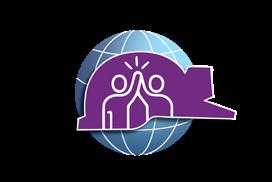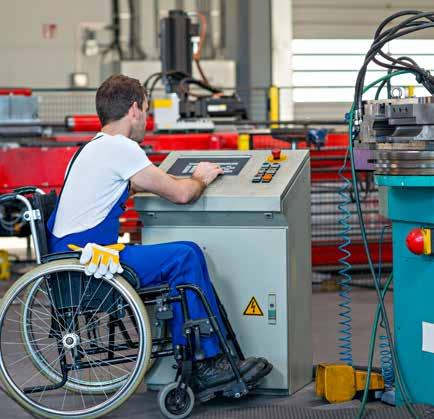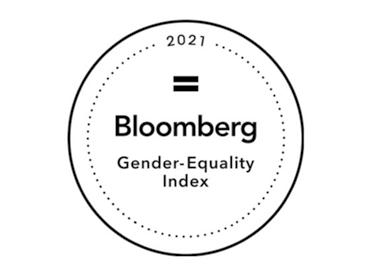
6 minute read
Foreword
DIVERSITY
and inclusion
Advertisement
FOREWORD
This issue of Inside Mining is about diversity and the power of inclusion. I intended to draw from as many voices as I could because the core value of diversity is inclusion. By Olebogeng Sentsho*
Olebogeng Sentsho won the Leader of Tomorrow Award at the 2019 Mining Indaba (Credit: Poppy Photography)
While preparing for the compilation of this foreword, I announced on LinkedIn that I would be taking contributions from anyone who had a burning issue to ventilate. Immediately, I was inundated with passionate appeals to highlight the agenda of the women in the mining industry for the year 2021. The response was overwhelming and so genuine.
I realised that as much as women have a transformation agenda in the sector, we have so many other pressing issues that need to be addressed, thereby serving as the infrastructure for that transformation. Inclusivity and leadership development are the key drivers of transformation.
To effect the changes we want, we must cultivate leaders that can lead that renewal.
Where the value lies
Many of the responses I received had a recurring theme that is underplayed in the mining industry: value. As a multifaceted industry, we need to invest in the bounty of our diversity. The intrinsic value of a diversified workforce in the industry is a central theme that must be prioritised as a business imperative. Various minority groups in extractives across the world are aware of this value; however, because that value is not represented on annual reports as a number on the balance sheet, it is not given the requisite attention and priority status. This is a travesty. Technical workplaces are the breeding ground for skills transfer and the cross-pollination of culture and ethics. By marginalising women, the youth and persons with disabilities, we miss out on an incredible opportunity to develop and nurture unique talent.
The youth, women, the disabled and SMMEs play a pivotal role in the mineral economy. Their ingenuity is a job creator and their proximity to technology is a useful resource in a scientific industry. Unfortunately, mines and the industry at large are using the Covid-19 pandemic as an excuse to circumvent their ESG obligations to this group of people.
Commitments to 30-day payment cycles have fallen to the wayside. SMMEs are failing at an alarming rate and the proprietors of those SMMEs, being women, the youth and the disabled are unable to be economically active. The transformation agenda

FOREWORD

does not function without the holistic inclusion of all who work in the mineral economy. The role of small businesses in the mining industry is to add that critical social value that holds our host communities together. By ensuring that they succeed, we inadvertently enable the diversification of the economy into more lucrative and sustainable sectors.
The agenda of women in mining took a backseat to Covid-19. We watched, with sadness, as we lost colleagues and friends to the unrelenting carnage of the disease. We watched, helplessly, as millions lost their lives and livelihoods globally; and many were left without any idea of where to next. As an industry, we had to pull ourselves out of the wreckage of the pandemic and ensure that operations became productive again while minimising the risk of spreading the deadly disease. The pressure was on us to preserve jobs and productivity while maximising profits to make up for the damage caused by the hard lockdown. Many operations went on care and maintenance with few returning to full productivity in the junior mining space.
The fight against Covid-19
The return to productivity was spearheaded by some of the most undervalued employees in mining: the safety, health, environmental and quality (SHEQ) control officers. They faced a mammoth task to guide the industry through a pandemic while ensuring the safety of miners on a shoe-string budget. Many were expected to innovate screening and detection protocols within days of receiving the government regulations. They spent countless hours designing and redesigning access protocols in line with complicated requirements. Their ability to facilitate the commencement of operations is why many in the industry were able to resume mining within a short space of time and recoup their losses.
Recently, Minerals Council South Africa announced that it would assist in the vaccination effort by facilitating vaccinations at its private facilities. This commitment to health and safety is a testament to the soul of our industry and must be reflected in how we treat and remunerate those tasked with the work of keeping us healthy and safe at work.
The majority of SHEQ officers in the industry are women. Unfortunately, their importance is often overshadowed by production targets and profits, leaving them standing alone, fighting for workers’ health. We have been reminded, through trauma, that the health and safety of all employees must remain paramount. It is important that we acknowledge and understand value. Our collective health is valuable and those who fight to protect it are valuable too.
Missed opportunities
The agenda put forward in the responses to the LinkedIn appeal illuminated a missed opportunity for the industry. Understanding women, youth and

FOREWORD
Diversity is vital to the success of any business
the disabled in mining is an opportunity to cultivate innovators and pioneers in the industry. Their invaluable contribution is missed because the relentless physicality of the work required undermines their ability to do it.
The industry on the African continent has not yet adopted the technology to prioritise skill over strength. Once this technology is adopted, it won’t matter if you are a man or a woman in mining, everybody will be able to do everything. Once we change that dynamic through technology, I think we will then level the playing fields. The industry has mechanised and even automated globally. Unfortunately, the marginalised professionals in sub-Saharan Africa are still excluded from contributing because the local mining companies are manacled by an inability to understand their value.
This foreword is not about demographic representation; numbers are not important. What matters here is impact. With transformation agendas at their most fragile as a result of political shifts towards the empowerment of women and the disabled, we need to re-examine the importance of ensuring that industries such as mining are dominated by women.
Corporates often advertise that they have ‘empowered’ a set number of women within the organisation, as if they have done those women some sort of favour. Fish cannot be applauded for swimming. Mining companies should be empowering women in their workforce. It is not a favour – it is a sustainability imperative. If they are not doing it, their companies will suffer in the long term. Holistic diversity is vital to success in any business. An ever-growing body of research shows that genderbalanced teams create better outcomes, better solutions, and improved financial performance.
The mechanisms of transformation require the system to prioritise the marginalised. Women need to take centre stage in this endeavour because – unlike the dominion practised by men over women for centuries – women are not seeking autonomy, but rather equality.
They require governmental structures to deviate from conventional policies and procedures to accelerate meaningful reform and inclusive growth. This deviation is often construed as corruption because it is a parallel system; however, parallel is not opposite. The systems have the same goals: maximum productivity facilitated by good governance. It is jarring because often, the processes feel unnatural and forced but that is exactly how they need to be to make meaningful inroads into holistic transformation. It is an uncomfortable process. There are no straight lines through it.
We need to remain focused on the goal: widespread inclusive growth and the industrialisation of our economy. That growth will come from our commitment to the cause and our ability to harness the productivity of all men and women at their most empowered.











